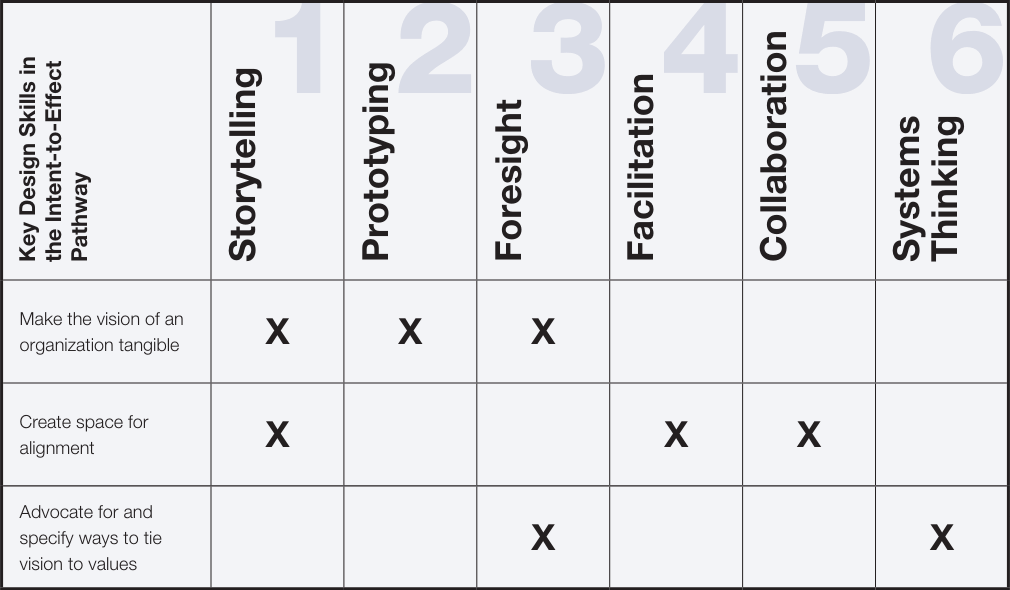6 Core Skills to Help You Progress from Intent to Effect
By Lead with Purpose Research Team
February 3, 2020

The Institute of Design at Illinois Tech (ID) released the Lead with Purpose report to highlight design’s central role in realizing executive vision.
As part of the Lead with Purpose report, the Intent-to-Effect Pathway is defined to demonstrate that design and designers are uniquely qualified to take responsibility for certain outcomes at the organizational level. Here, learn more about six core skills you can activate collectively to help you progress from Intent to Effect.
1. Storytelling
“Designers dispel ambiguity through concrete things like infographics, [user] stories, or insights boiled down to a sentence. That’s the difference between a designer and a scientist or a technician. The technician could give you a hundred pages of data that probably says the same thing that a designer would say in two sentences.”
2. Prototyping
“We’re able to quickly try something out. And that could be as simple as a sketch or could be as elaborate as a complex model and everything in between. You’re able to rapidly try ideas in the context of your user and your business. That’s a pretty special skill set and not many have it.”
3. Foresight
“The work that we do as designers is primarily around helping our clients understand or become aware of all the different types of disruption happening within their industries, their sectors, their companies. We help them understand the drivers of this disruption and the implications and how to manage and continue to grow or innovate within the disruption.”

4. Facilitation
“Strategy thinking tells us what we want to have happen at a high level, and then we pretend like we know how to get there. How we shape—and facilitate—activities to get to those goals is where design comes in.”
5. Collaboration
“Any mature design organization needs to be sensitive to R&D, marketing, sales, and manufacturing. For me, a mature design organization leverages design to support its other functions. It’s not design as a service. It’s design as collaboration.”
6. Systems Thinking
“Often it’s my designers saying, ‘Hey, we’re about to release this new product, but how does this marry with this team over there? And then, how does that also then marry with this product that our customers are also using? And at what point do we get injected into this conversation? And what other folks in the business do we need to be talking to, to make this all work?”
Explore the full 2020 ID Report in our Resource Library. You can also download the PDF.